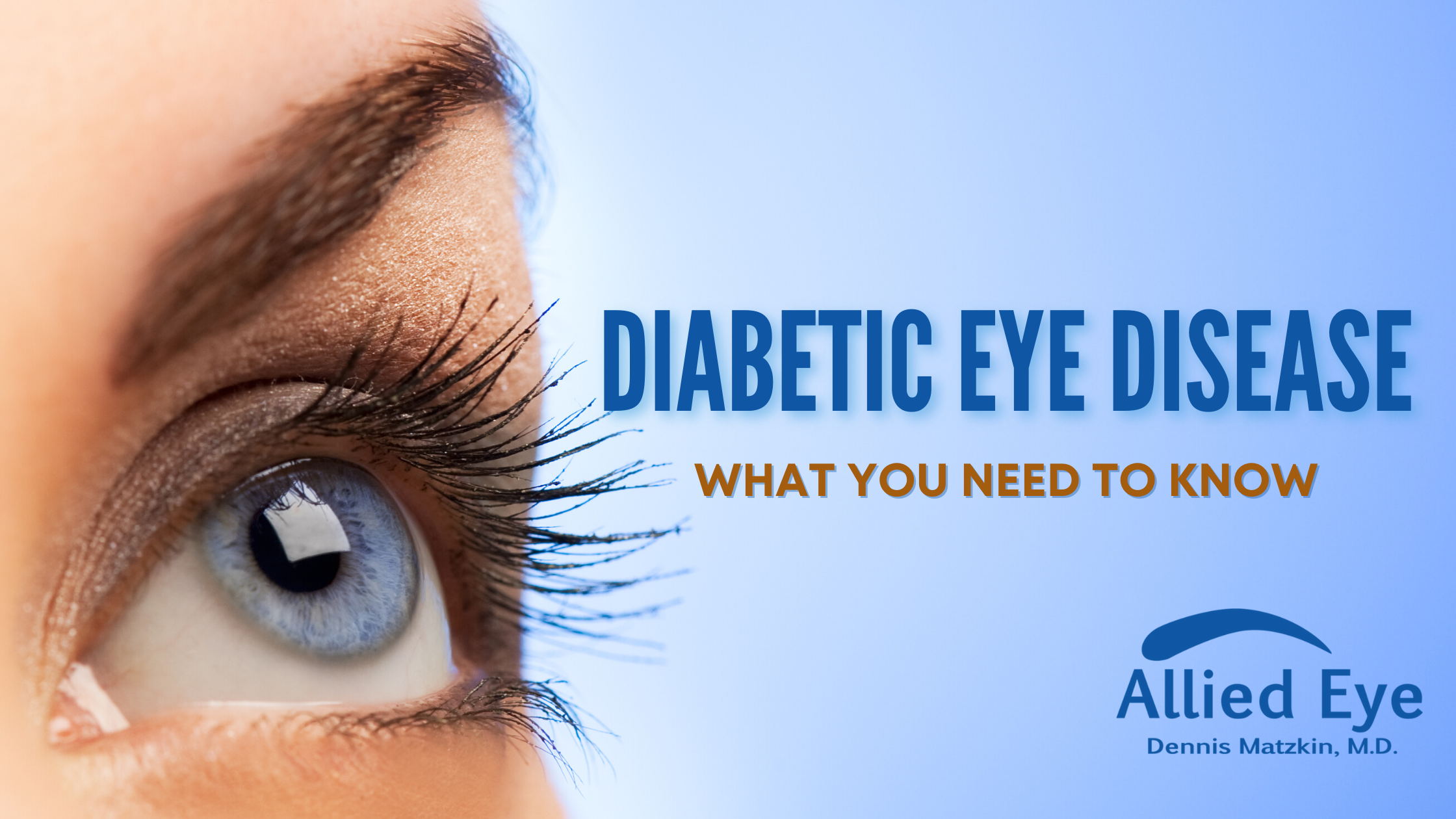November is #DiabeticEyeDiseaseAwarenessMonth
If you’ve received a diabetes diagnosis, you may not have thought about how the disease can affect your eyes. Adjusting to the diabetic lifestyle involves revamping your eating habits, exercising regularly and keeping up with your blood sugar levels—all time-consuming tasks. However, as with other serious chronic medical conditions, it’s important to know how diabetes can affect your entire body. That’s why Allied Eye joins the American Academy of Ophthalmology in observing Diabetic Eye Disease Awareness Month each November.
Did you know that diabetes is the main cause of blindness among adults between the ages of 20 and 74? Serious eye problems tend to happen more often to people with diabetes, yet over half of all diabetics fail to schedule annual eye exams. This is unfortunate because early eye disease detection and treatment is a vital part of protecting your precious vision.
Allied Eye is pleased to offer our patients diabetic eye exams. Keep reading to learn more about these exams, and find out which symptoms could indicate a diabetes-related eye problem.
Which eye conditions affect those with diabetes?
Certain eye diseases are more common among people with diabetes:
- Cataracts make your vision blurry by causing a cloudy area on the eye’s natural lens. Diabetes increases the risk of developing cataracts.
- Glaucoma causes abnormal pressure to build up inside the eye. If left untreated, glaucoma can cause vision loss or blindness.
- Diabetic Retinopathy is a condition where chronically high blood sugar levels cause tiny blood vessels in the retina to weaken. They may swell and leak blood. This diagnosis often comes as a surprise because there are no symptoms at its onset. Without treatment, it can progress to diabetic macular edema. With this condition, the macula (the area of the retina responsible for sharp central vision) swells with fluid leaked from damaged blood vessels. This can result in blindness.
Symptoms of Diabetes-Related Eye Problems
If you experience any of the following symptoms, call for an appointment with Dr. Matzkin or Dr. Herron:
- Seeing red spots or a red fog
- Seeing little black spots or lines that don’t go away
- Seeing an increased number of “floaters”
- Having a sudden change in how well you can see
- Having vision that fluctuates between blurry and clear
- Noticing that it takes longer for your eyes to adjust to darkness
- Experiencing dimmer night vision
What’s involved with a diabetic eye exam?
It’s important for your eye doctor to fully examine your retina whether you have Type 1 or Type 2 diabetes. You will need a dilated eye exam, which you may have had before. You will be given eye drops to widen your pupils so that your doctor can see inside your eye to check for problems.
The doctor may take pictures of your retina, which is located at the back of the eye. Keeping track of these images can help your doctor notice any concerning changes while they’re still in the early stages. Your doctor may conduct other tests to look for macular edema, or to view how well the blood vessels within your retina are functioning. Learn more about diabetic retinopathy diagnosis and treatment options here.
What can a diabetic person do to safeguard their vision?
All of the steps you take to manage your diabetes are also good for your eyes. Maintaining a healthy weight, getting regular exercise, and not smoking all help reduce the risk of developing diabetes-related eye -problems.
You may have heard your doctor or nurse refer to the ABCs of diabetes. These letters stand for:
A: A1c levels of under 7% is recommended for most diabetics. However, your doctor might set a different goal for you. Do your best to meet and maintain your personal A1c goal.
B: Blood pressure is another number to pay attention to. High blood pressure causes heart disease, which is also more common in people with diabetes. Usually, the goal is to keep blood pressure below 10/90 mmHg, but as with A1c, your doctor may set a different goal for you.
C: Cholesterol levels should be kept in normal ranges to protect your blood vessels. LDL (“bad” cholesterol) can build up and cause plaques that partially or fully block your blood vessels. HDL (“good” cholesterol) helps your body remove LDL from your bloodstream. Your primary care doctor or cardiologist can help you set HDL and LDL goals.
In addition to minding your ABCs, make sure you schedule an annual diabetic eye exam—and keep your appointment! Keep a record of any vision changes, and ask your Allied Eye team to send your eye exam results to your other doctors. Call or Text our team of eye care professionals at (423) 855-8522.


